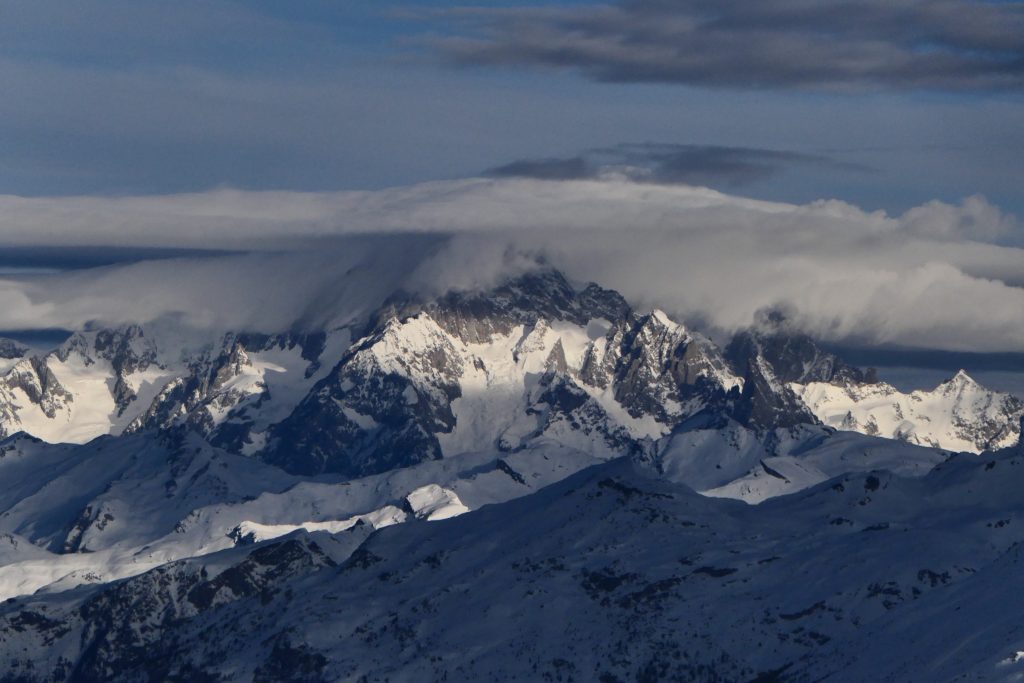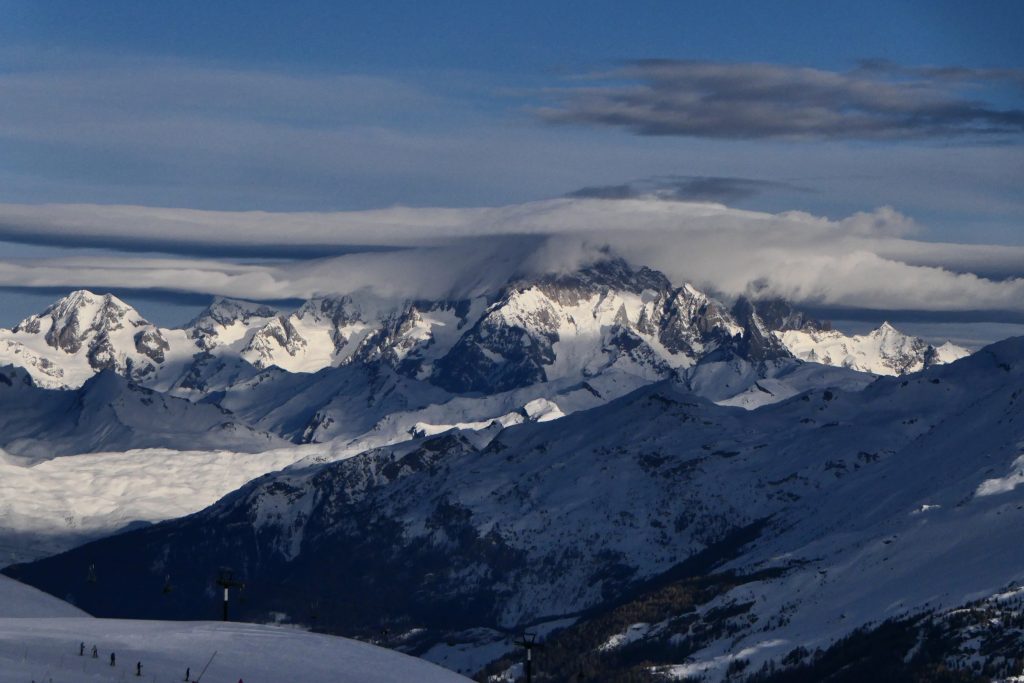When asked how to make a turn Harry answered (paraphrased) “Transfer your weight to the outside ski” and “face downhill”. This is classic ski school dogma and the reason why his skiing feels like a constant battle, tiring out the legs, body rotation and pushing the skis out to the side. All things you can sort of get away with on a good piste – but a complete disaster if on ice, bumps, off piste or a race course (well, everywhere else).
We set straight to work to rebuild Harry’s skiing on a sound basis
- Dynamics
- Skating/Adductors
- Forward pressure
- Pivot/Side Slip
- Angulation
Basic Dynamics
- Skis must be travelling forward – like a bicycle
- This is mainly about using the outside leg (start of new turn) to push the centre of mass into the centre of the new turn – for the whole duration of the turn
- There is no “balance” when skiing – dynamics is the physics of disequilibrium
- You are looking for stability from organised accelerations (ski technology!)
- Notice in the photos below the outside leg is essentially straight in a skating action (flexion for absorption and other purposes is primarily at the hip joint)
- The centre of mass goes down toward the snow – and to complete the turn it comes back up – like a motorbike in a turn
- There is no “Centrifugal Force” acting on the skier – only a deflection inward away from a straight line. This deflection is used to lift the skier up at the end of the turn – which involves “finishing” the turn – I.E. turning almost back up the hill.
- Remain square to the skis (follow the skis around the turn with your body) until you are really comfortable with movement of the centre of mass and clearly aware of moving it.
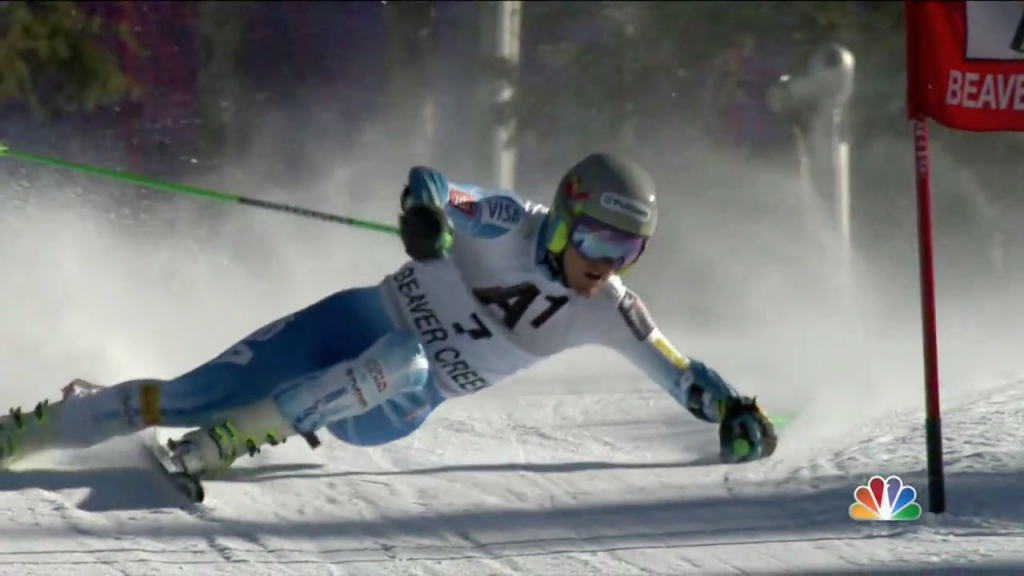
Skating/Adductors
Skiing is just disguised skating. The main difference is the skis are wide and have two edges When diverging the skis outwards at the tips into a skating stance the skis want to flatten on the snow and the stiff shaft of the ski boots will pull the knees outward. The adductor muscles need to be engaged to hold the skis on their inside edges. This is a pattern of muscle use – the adductors of both legs contracting – that should be maintained when skiing parallel.


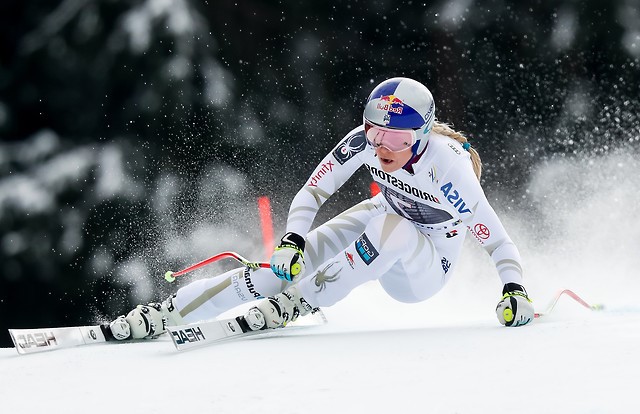
The other difference between skis and skates: – it’s just that skis bend and scribe arcs on the ground and are generally used on slopes not flat lakes. Skating actions are fundamental for a skier’s development because they involve independent leg action where only one leg at a time is really used. Although skiers can stand on two feet the body is oriented specifically on one hip joint at a time (when turning) and has to function as if standing on one leg. Skating exercises such as skating step turns are helpful in developing basic skills. Skating turns use diverging skis (opposite from snowplough) and incremental stepping of the centre of mass inward toward the turn centre. This is ideally the first sort of turning that any complete beginner should experience – on flat terrain.
Forward Pressure
Use the fronts of the skis – that’s where the real turning power lies. It’s the angulated body shape of the skier (in the white catsuit in photo above) that maintains pressure on the front. When combined with good dynamics even in off piste crud the front is where to aim for pressure. Most people never learn this and try to use the backs of the skis off piste. Some skis however “dive” in certain types of deep snow so you need the right equipment for the job.
Side Slipping (Joystick Control of Centre of Mass)
- Feet close together (Both skis on uphill edges – both adductors engaged)
- Move centre of mass downhill slightly to side slip
- Also move centre of mass either forward or backward to diagonally side slip
Pivot (Skis sliding Sideways)
Pivoting is derived from the skis sliding sideways and can be developed from side slipping (It’s a braking form of turning). With a “pure pivot” as an exercise there is no forward travelling of the ski across the hill. Support for the centre of mass is now provided by support from a downhill pole plant. This is the real reason why we have ski poles! There is a full dedicated explanation of pivoting at the following link: “PIVOT“
Combining Dynamics and Pivot
- Dynamics depends of forward motion of the skis and lateral falling/pushing of the centre of mass
- Pivot depends on lateral motion of the skis – but always with the centre of mass being driven inward (toward the turn centre)
- The two can be combined – when there is both forward and lateral motion – making overall control of trajectory and speed totally under control of the skier
- In all cases there must be active adductor muscle use – and the feet must be “everted” ie. turned outward inside the ski boots – diverging sightly (skating stance)
- The essential element to take from combining pivot and dynamics is to execute the turn transition from the uphill edge of the uphill ski – noting that the ski enters the new turn more easily than when on its inside edge and this also prevents stemming (and body rotation)
Body Management
(Hip Angulation)
There’s a compilation of notes on the subject here: http://madeinmountains.com/chiskiing/
Take a look at the two Olympic champion skiers in the photograph below.
Killy’s image from the 1960s has his chest facing downhill whereas Noel’s image from 2022 has his chest facing forward. What Killy is doing destroys your lower back and is probably why he never went on skis again after he stopped racing.

Protecting the Spine
- Hold the front of the pelvis up – aiming for “neutral pelvis”
- During the turn pull the outer hip backwards so that the ski doesn’t pull it in front of your ribs
- Look for a stretch between the ribs and hip joint
- Look for a reflex contraction of the lower abdominals – the postural reflex
- Keep the shoulders/chest following the skis (to some degree)
- Always “counter turn” the pelvis more than the chest/shoulders
- For tighter turns with more pivoting start to use the pole plant to some degree
- The more “countered” the pelvis the more the next turn can be “anticipated”
Source of Hip Angulation
The upper body needs to tilt forward over one hip joint – then rotate around it. This is in addition to pulling back the outside hip etc.
The body shape produced alters the location of the centre of mass enabling pressure on the ski fronts and also greater agility both into and out of turns – and pole planting if the skis are swinging laterally.
The hip angulation also provides flexion of the hip joint that gives absorption of shocks.
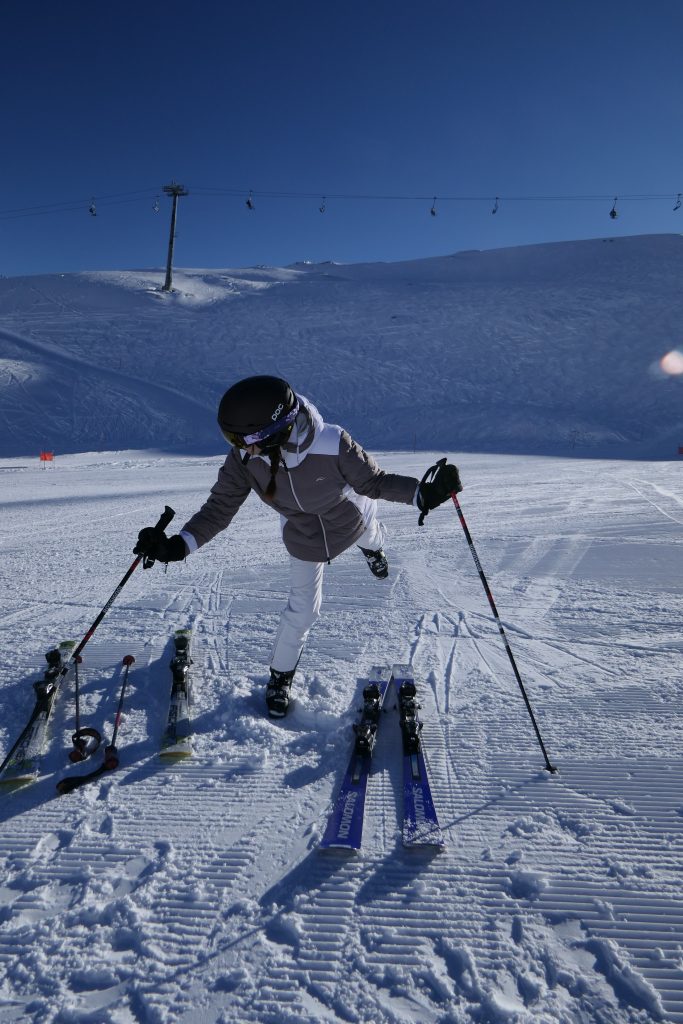
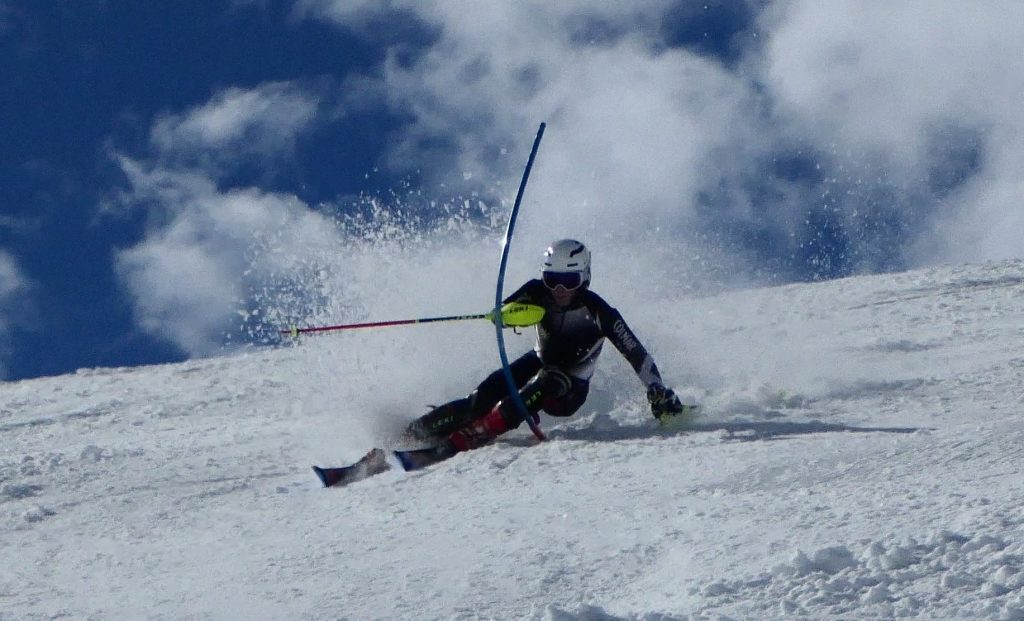
Pressure on the ski fronts
The most visible aspect of Harry’s changes here is that the turns are rounder with the ski being used properly in the first half of the turn. Due to the centre of mass moving inward instead of the feet being shoved outward there is far greater stability – although to the untrained eye the two look much the same. This is the technical basis that allows higher levels to be attainable to anyone.
Today’s photos…
